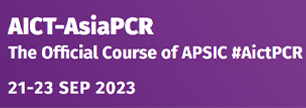


- NEWS
-
-
Scientific LibraryAcute Coronary Syndrom ASCVD Prevention Bifurcation Stenting Cardio-Oncology Congestive Heart Failure DAPT Duration Drug Coated Balloon Fractional Flow ReserveCases VideosE-LearningIndustry Insights
- LIVE REVIEW
-
 Article Link
Article Link

Frequency, predictors, and prognosis of ejection fraction improvement in heart failure: an echocardiogram-based registry study
A Ghimire, N Fine, FA McAlister et al.
KEYWORDS
echocardiography; epidemiology; heart failure; ejection fraction; HFrecEF
AIMS - To identify variables predicting ejection fraction (EF) recovery and characterize prognosis of heart failure (HF) patients with EF recovery (HFrecEF).
METHODS AND RESULTS - RETROSPECTIVE study of adults referred for ≥2 echocardiograms separated by ≥6 months between 2008 and 2016 at the two largest echocardiography centres in Alberta who also had physician-assigned diagnosis of HF. Of 10 641 patients, 3124 had heart failure reduced ejection fraction (HFrEF) (EF ≤ 40%) at baseline: while mean EF declined from 30.2% on initial echocardiogram to 28.6% on the second echocardiogram in those patients with persistent HFrEF (defined by <10% improvement in EF), it improved from 26.1% to 46.4% in the 1174 patients (37.6%) with HFrecEF (defined by EF absolute improvement ≥10%). On multivariate analysis, female sex [adjusted odds ratio (aOR) 1.66, 95% confidence interval (CI) 1.40–1.96], younger age (aOR per decade 1.16, 95% CI 1.09–1.23), atrial fibrillation (aOR 2.00, 95% CI 1.68–2.38), cancer (aOR 1.52, 95% CI 1.03–2.26), hypertension (aOR 1.38, 95% CI 1.18–1.62), lower baseline ejection fraction (aOR per 1% decrease 1.07 (1.06–1.08), and using hydralazine (aOR 1.69, 95% CI 1.19–2.40) were associated with EF improvements ≥10%. HFrecEF patients demonstrated lower rates per 1000 patient years of mortality (106 vs. 164, adjusted hazard ratio, aHR 0.70 [0.62–0.79]), all-cause hospitalizations (300 vs. 428, aHR 0.87 [0.79–0.95]), all-cause emergency room (ER) visits (569 vs. 799, aHR 0.88 [0.81–0.95]), and cardiac transplantation or left ventricular assist device implantation (2 vs. 10, aHR 0.21 [0.10–0.45]) compared to patients with persistent HFrEF. Females with HFrEF exhibited lower mortality risk (aHR 0.94 [0.88–0.99]) than males after adjusting for age, time between echocardiograms, clinical comorbidities, medications, and whether their EF improved or not during follow-up.
CONCLUSION - HFrecEF patients tended to be younger, female, and were more likely to have hypertension, atrial fibrillation, or cancer. HFrecEF patients have a substantially better prognosis compared to those with persistent HFrEF, even after multivariable adjustment, and female patients exhibit lower mortality risk than men within each subgroup (HFrecEF and persistent HFrEF) even after multivariable adjustment.




















